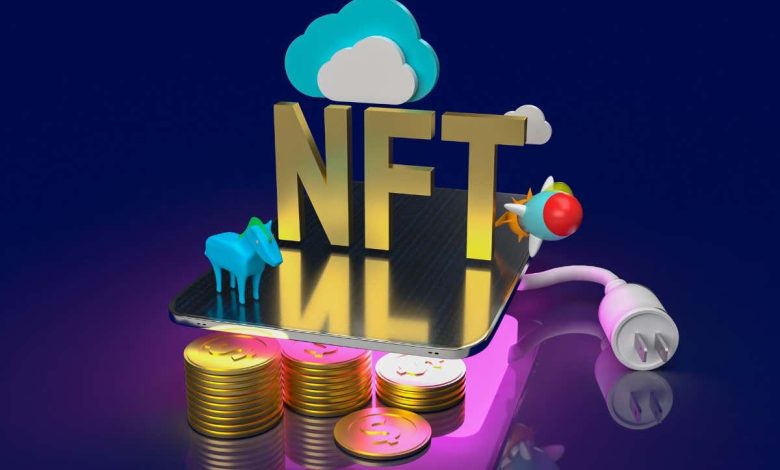How to Create and Sell Your Own NFT

- Understanding NFTs: A Beginner’s Guide
- Choosing the Right Platform for Your NFTs
- Creating Your First NFT: Step-by-Step Guide
- Marketing Strategies for Selling Your NFTs
- Navigating the Legal Aspects of NFTs
- Tips for Maximizing Profits from Your NFT Sales
Understanding NFTs: A Beginner’s Guide
An NFT, or non-fungible token, is a type of digital asset that represents ownership or proof of authenticity of a unique item or piece of content using blockchain technology. Unlike cryptocurrencies such as Bitcoin or Ethereum, which are fungible and can be exchanged on a one-to-one basis, NFTs are one-of-a-kind and cannot be replicated. This uniqueness is what gives NFTs their value and appeal to collectors and creators alike.
When you create an NFT, you are essentially tokenizing a digital asset, whether it’s a piece of art, a video clip, a tweet, or any other form of digital content. By minting an NFT, you are creating a digital certificate of ownership that is stored on a blockchain, making it secure, transparent, and tamper-proof. This certificate includes metadata that describes the asset, such as the creator, the date of creation, and any other relevant information.
One of the key benefits of NFTs is that they allow creators to monetize their digital creations in a new and innovative way. By selling their work as NFTs, artists, musicians, writers, and other creators can reach a global audience of collectors and fans, who can purchase and trade these digital assets on various NFT marketplaces. This has opened up new opportunities for creators to showcase and sell their work without the need for traditional intermediaries.
Choosing the Right Platform for Your NFTs
When it comes to creating and selling your own NFTs, choosing the right platform is crucial. There are several factors to consider when selecting a platform for your NFTs, including fees, user interface, and audience reach.
One popular platform for selling NFTs is OpenSea, which offers a user-friendly interface and a wide range of digital assets to choose from. Another option is Rarible, which allows creators to mint their own NFTs without any upfront costs. Additionally, platforms like Foundation and SuperRare cater to a more exclusive audience, which may be beneficial if you are looking to target a niche market.
Before deciding on a platform, it’s essential to research each one thoroughly and consider which features are most important to you. Some platforms may have higher fees but offer more visibility, while others may be more cost-effective but have a smaller user base. Ultimately, the platform you choose should align with your goals as an NFT creator and help you reach your target audience effectively.
Creating Your First NFT: Step-by-Step Guide
To create your first NFT, follow these step-by-step instructions:
1. **Choose a Platform**: The first step in creating your NFT is to choose a platform to mint it on. Popular platforms include OpenSea, Rarible, and Mintable. Each platform has its own set of features and fees, so be sure to research and choose the one that best fits your needs.
2. **Create a Digital Wallet**: Next, you’ll need to create a digital wallet to store your NFTs. Platforms like MetaMask and Trust Wallet are commonly used for this purpose. Once you have a wallet set up, you’ll be able to send and receive NFTs.
3. **Upload Your Artwork**: After setting up your wallet, you can now upload your artwork to the chosen platform. Make sure your artwork meets the platform’s guidelines for file type, size, and resolution. You can also add a title, description, and any other relevant information about your NFT.
4. **Set Your Price and Royalties**: When uploading your artwork, you’ll have the option to set a price for your NFT. You can also choose to set royalties, which will allow you to earn a percentage of future sales of your NFT. Be sure to consider these factors carefully before finalizing your listing.
5. **Mint Your NFT**: Once you’ve uploaded your artwork and set your price, you can mint your NFT. This process involves creating a unique token on the blockchain that represents your artwork. After minting, your NFT will be available for sale on the platform.
6. **Promote Your NFT**: Finally, once your NFT is live, it’s time to promote it to potential buyers. Share it on social media, reach out to collectors and art enthusiasts, and consider participating in NFT marketplaces and auctions to increase visibility and sales.
By following these steps, you can create and sell your own NFT successfully. Remember to stay informed about the latest trends and developments in the NFT space to maximize your success.
Marketing Strategies for Selling Your NFTs
To effectively market your NFTs and increase sales, it is crucial to implement strategic marketing tactics. One key strategy is to leverage social media platforms to promote your NFTs to a wider audience. By creating engaging posts and sharing your NFTs on platforms such as Twitter, Instagram, and TikTok, you can generate interest and attract potential buyers.
Another effective marketing strategy is to collaborate with influencers in the NFT space. Influencers can help promote your NFTs to their followers, increasing visibility and credibility. Look for influencers who align with your brand and target audience to maximize the impact of your collaboration.
Additionally, participating in NFT marketplaces and online communities can help you reach a larger audience of collectors and investors. By showcasing your NFTs in curated collections and engaging with the community through forums and discussions, you can build relationships and establish yourself as a reputable NFT creator.
Furthermore, consider implementing email marketing campaigns to keep your audience informed about new releases, exclusive drops, and special promotions. By building an email list of interested collectors and investors, you can nurture relationships and drive sales over time.
In conclusion, by utilizing a combination of social media marketing, influencer collaborations, participation in online communities, and email marketing, you can effectively promote and sell your NFTs to a wider audience. Implementing these marketing strategies will help you increase visibility, attract buyers, and ultimately grow your NFT business.
Navigating the Legal Aspects of NFTs
Navigating the legal aspects of NFTs is crucial for creators looking to enter this rapidly growing market. Understanding the legal implications of creating and selling NFTs can help protect your intellectual property and ensure compliance with relevant laws and regulations.
One key legal consideration when creating and selling NFTs is copyright law. It is important to ensure that you have the necessary rights to the content you are tokenizing. This includes obtaining permission from any third parties whose work is included in your NFTs. Failure to do so could result in legal action and damage to your reputation as a creator.
Another important legal aspect to consider is the issue of ownership and transfer of NFTs. Smart contracts, which are used to facilitate the sale and transfer of NFTs, should be carefully drafted to clearly outline the rights and responsibilities of both the creator and the buyer. Additionally, it is essential to understand the tax implications of selling NFTs, as these transactions may be subject to capital gains tax.
In addition to copyright, ownership, and tax considerations, creators should also be aware of potential legal issues related to fraud, money laundering, and securities regulations. Due diligence is essential when entering the NFT market to ensure that you are not unknowingly engaging in illegal activities.
Overall, navigating the legal aspects of NFTs requires a thorough understanding of intellectual property law, contract law, tax law, and regulatory compliance. By taking the time to educate yourself on these issues and seeking legal advice when necessary, you can protect yourself and your creations in the exciting world of NFTs.
Tips for Maximizing Profits from Your NFT Sales
When it comes to maximizing profits from your NFT sales, there are several strategies you can implement to ensure you are getting the most out of your digital assets. Here are some tips to help you make the most of your NFT sales:
- Research the Market: Before listing your NFT for sale, take the time to research the current market trends and prices. This will help you determine the optimal pricing strategy for your digital asset.
- Create High-Quality NFTs: To attract buyers and command higher prices, make sure your NFTs are of high quality. This includes using high-resolution images, unique designs, and engaging content.
- Build a Strong Brand: Establishing a strong brand identity can help increase the value of your NFTs. Consider creating a consistent style and theme for your digital assets to make them more recognizable to buyers.
- Engage with Your Audience: Building a community around your NFTs can help drive sales and increase profits. Engage with your audience through social media, forums, and other channels to build a loyal following.
- Offer Limited Editions: Creating limited editions of your NFTs can create a sense of scarcity and exclusivity, driving up demand and prices. Consider offering limited editions or one-of-a-kind pieces to attract collectors.
By following these tips, you can maximize profits from your NFT sales and build a successful digital art business. Remember to stay informed about market trends, create high-quality NFTs, build a strong brand, engage with your audience, and offer limited editions to attract buyers and increase profits.



